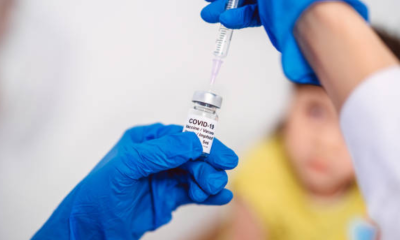
Estimates indicate that the number of people with diabetes will reach 1.3 billion by 2050
Follow Us @
Estimates indicate that the number of people with diabetes will reach 1.3 billion by 2050
Estimates published last month in the scientific journal The Lancet point out that the global number of people with diabetes should reach 1.3 billion by 2050. In 2021, about 529 million people suffered from the disease, i.e. the number of cases of the condition should more than double in less than 30 years. “The projection is very worrying, since the kidneys and the heart are among the main affected by diabetes. Kidney disease is 10 times more common in diabetics because of an event known as hyperfiltration of blood in the kidneys. Therefore, diabetic patients should count on the help of a nephrologist to control the disease and avoid kidney damage.
In addition, diabetic patients have a three to four times greater risk of suffering a cardiovascular event”, explains Dr. Caroline Reigada, nephrologist, specialist in Internal Medicine by the Irmandade da Santa Casa de Misericórdia de São Paulo and in Nephrology by the Hospital das Clínicas of the Faculty of Medicine of the University of São Paulo. “Diabetes is an umbrella term for a number of conditions involving high blood sugar levels. It can occur due to defects in the secretion or action of the hormone insulin, which is produced in the pancreas by the so-called beta cells. The main function of insulin is to promote the entry of glucose into the body’s cells so that it can be used for various cellular activities. The lack of insulin or a defect in its action results, therefore, in the accumulation of glucose in the blood, which we call hyperglycemia”, explains nutritionist Dr. Marcella Garcez, director and professor at the Brazilian Association of Nutrology (ABRAN).
By 2050
The publication points to the rapid increase in obesity rates and inequality in access to health as the main causes for the growth in the number of cases of diabetes in the future. And, according to the authors, most of these cases are constituted by type 2 diabetes, which is characterized by impaired insulin secretion and increased insulin resistance. “The disease is responsible for more than 2 million deaths annually and is the seventh leading cause of disability worldwide”, explains the nutritionist.
The condition, when not controlled, can have negative consequences for the entire organism, including vision, nerves and lower limbs, in addition to causing dehydration, difficulty in healing and respiratory complications. And the kidneys and the heart are among the main ones affected. “Diabetes is an extremely inflammatory disease, in which the exaggerated amount of glucose in the blood is capable of causing blood hyperfiltration in the kidneys (the so-called glomerular hyperfiltration). In addition, it increases the concentration of advanced glycosylation products (the process in which sugars are added to proteins and lipids, transforming them into glycoproteins and glycolipids), which are most responsible for the complications of diabetes. When these products are activated by the immune system, diseases of blood vessels and nerves appear, as well as kidney damage. These are the so-called micro and macrovascular complications of diabetes. That is, changes in smaller vessels, such as the kidneys and retinas (microvascular, and large vessels and the heart (macrovascular)”, explains nephrologist Dr. Caroline Reigada. Worldwide, 44% of people with the disease develop chronic kidney disease.
Control
Therefore, it is essential that patients already diagnosed with diabetes keep the disease under control. “The control of diabetes, which presents easy diagnosis (a simple blood test), should aim, in most cases, a glycated hemoglobin lower than 7%”, says Dr. Caroline Reigada. And those who still don’t suffer from the disease should perform tests regularly to detect any possible changes early. “Remember that diabetes can be an insidious disease. The diagnosis of pre-diabetes and its treatment is the best way to avoid complications”, adds the nephrologist.
But the best way is to spare no efforts to prevent diabetes. “Intensive lifestyle modification remains the best way to reduce the risk of developing type 2 diabetes. It is necessary to improve eating habits, include physical exercise, improve sleeping habits, avoid alcoholism and smoking. And, in the prevention and treatment of metabolic syndrome, physical exercise is considered of great importance. Such an intervention has been shown to improve glucose tolerance and reduce insulin resistance. The moderate practice of aerobic and strength exercises is indicated for everyone, even more so for pre-diabetics and people with metabolic syndromes, as long as it is frequent and obeys a periodicity. Flexibility and relaxation activities, associated with strength and aerobic activities, also bring positive impacts. The most important thing is to get out of the sedentary lifestyle”, adds Dr. Marcella Garcia.
Featured Photo: Playback
Estimates indicate that the number of people with diabetes will reach 1.3 billion by 2050
Follow AFRILATEST on Google News and receive alerts for the main news about celebrities, soap operas, series, entertainment and more!
SHARE POST AND EARN REWARDS:
Join our Audience reward campaign and make money reading articles, shares, likes and comment >> Join reward Program
FIRST TIME REACTIONS:
Be the first to leave us a comment, down the comment section. click allow to follow this topic and get firsthand daily updates.
JOIN US ON OUR SOCIAL MEDIA: << FACEBOOK >> | << WHATSAPP >> | << TELEGRAM >> | << TWITTER >
#Estimates #number #people #diabetes #reach #billion
-

 Fashion3 months ago
Fashion3 months agoVogue Arabia cover welcomes Salma Hayek in an interview with Penélope Cruz
-

 Football3 months ago
Football3 months agoVAR points out Diego Costa's offense against the fourth referee
-

 USA today entertainment3 months ago
USA today entertainment3 months agoBeyonce with the single “Break My Soul” leads on Spotify Brazil
-

 Health and Fitness3 months ago
Health and Fitness3 months agoVaccine against the reappearance of skin cancer enters final testing phase
-

 USA today entertainment3 months ago
USA today entertainment3 months agoSZA, Future and DJ Khaled come together in collaboration
-

 News3 months ago
News3 months agoParents of former player Waleswska are pressured by widower to pay rent for the house where they live
-

 USA today entertainment3 months ago
USA today entertainment3 months agoLarissa Luz and Linn da Quebrada enchant at the Multishow Awards with a tribute to Elza Soares.
-

 Good News TV series3 months ago
Good News TV series3 months agoThe shocking reason behind the decision not to show dead characters in The Last Of Us episode revealed













































